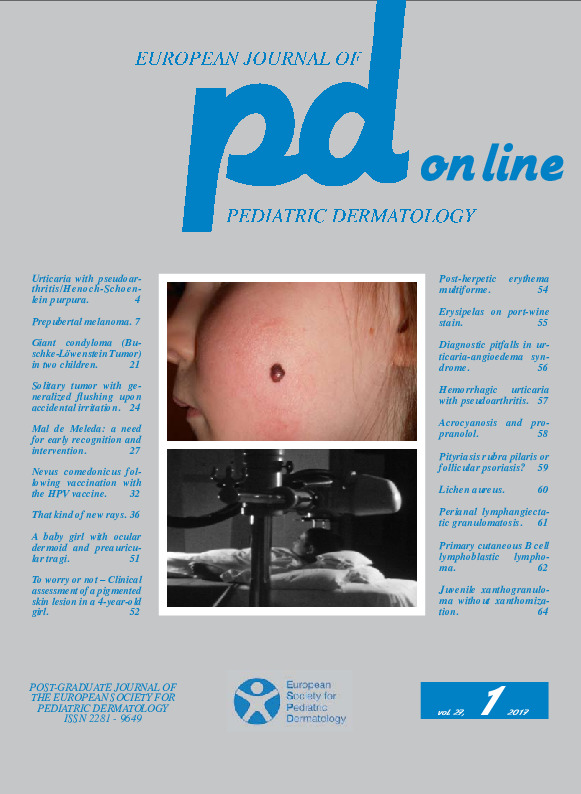Acrocyanosis and propranolol.
Downloads
DOI:
https://doi.org/10.26326/2281-9649.27.1.1328How to Cite
Bonifazi E. 2017. Acrocyanosis and propranolol. Eur. J. Pediat. Dermatol. 27 (1): 58. 10.26326/2281-9649.27.1.1328.
pp. 58
Abstract
Acrocyanosis (A) is a persistent condition in which the extremities are cold and blue without a clear demarcation. A is related to an altered vascular tone with arteriolar vasoconstriction and venous vasodilation. A is frequently observed in adolescents, especially in cold weather, but it is exceptional in children. A is seen most easily in children with attention deficit hyperactivity disorder treated with psychostimulant drugs (1).The most frequent side effects of propranolol, which is the drug of choice to treat hemangioma are sleep disorders and A (3). These side effects could be linked to each other; there are cases in the literature of A occurring only when the baby is awake, but not when he sleeps (2). It would be useful to verify whether atenolol, a hydrophilic beta blocker that does not cross the blood-CNS barrier, has a different incidence of acrocyanosis.
Keywords
Acrocyanosis, propranolol

